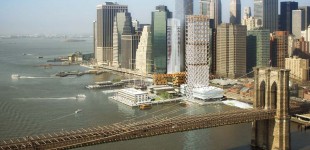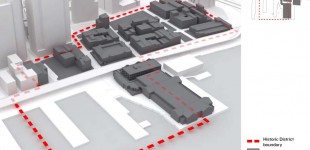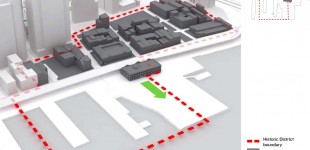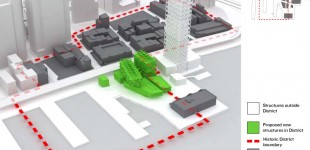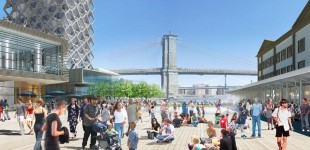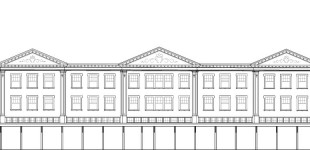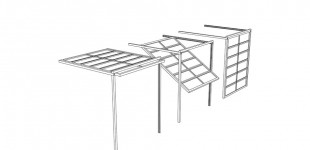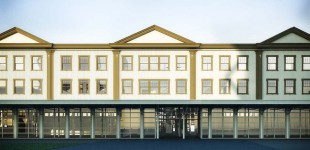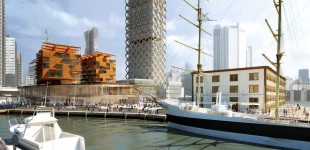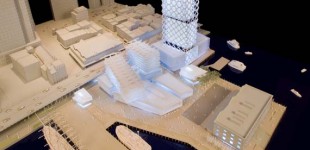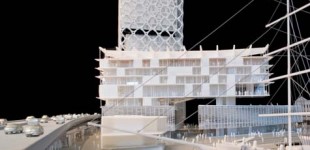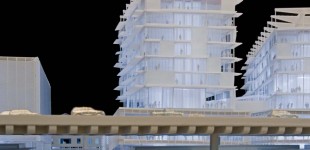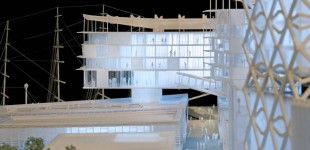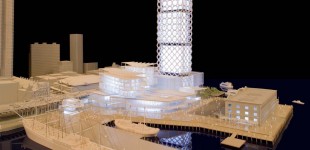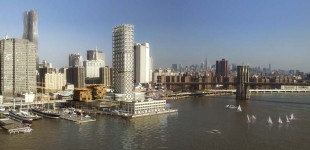SÃO PAULO, BRAZIL
GRADUATE STUDIO
2007
This design for a foreign study center for the University of Texas School of Architecture in São Paulo, Brazil is intended as a prototype, thus there is no specific context and shipping containers were chosen as the building system for their standardized serial nature.
The design takes cues from the modernist tradition of Brazil and the temperate climate of São Paulo. The building is centered on an open court with circulation placed in defined zones surrounding it. Emphasis is placed on the interlocking of spaces with a variety of double and triple-height moments which also allow for significant natural ventilation. From the exterior, much of this sectional complexity is masked, creating a sense of discovery as one moves through the layers of the building’s interior.
In 2010, this project was published in Traces & Trajectories: The University of Texas at Austin School of Architecture at 100.
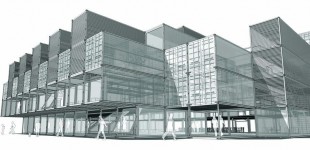
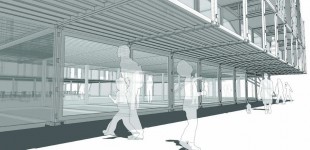
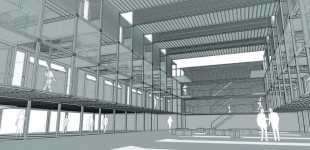
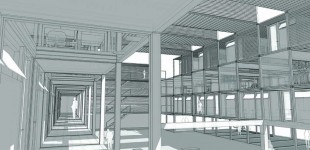
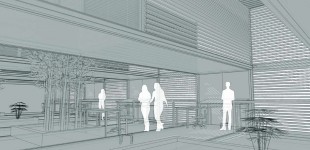
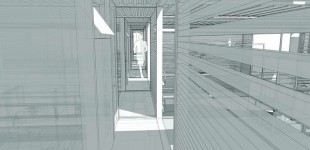
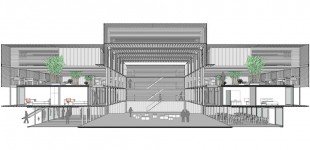
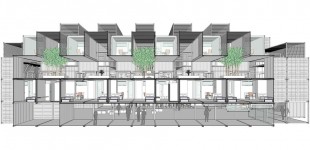
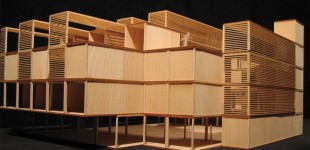
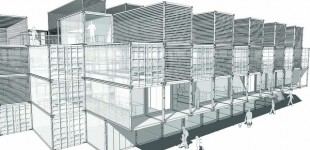 ]]>
]]>2002
WITH: BEN SCHMIDT
Designed for installation in Harvard Yard, this sculpture consists of two steel arcs, one 45 feet long and the other 25 feet, covered in sod spanning sections of grass between walkways in the Yard. The arcs continue an implied pathway connecting the main entrances of two buildings on opposite sides of the Yard. The paved walkway that follows this axis abruptly stops midway across; the arcs continue the trajectory.
The form was a response to the obsessive concerns of the University about the impact of public art on the precious grass of the Yard. The solution was to create a sculpture that never touched the grass but instead bounded lightly over it. After exhibition in Harvard Yard, this piece was exhibited at the Four Corners Art Center in Rhode Island.


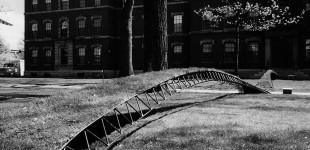
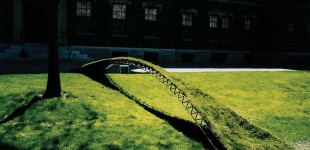
 ]]>
]]>NEW YORK, NEW YORK
SHoP ARCHITECTS
2008
NORTHVALE, NEW JERSEY
SOLURI ARCHITECTURE
2010
This 17,000 sf renovation of a lighting manufacturer’s corporate headquarters includes office space, training facilities, and product design and testing labs. Light, form, and color are used to articulate the distinct functional zones within the building. The project also includes custom workstations. Sustainability was a key design concern, and the project is expected to earn a LEED Gold rating.
This project was done entirely in Revit. Acoustical issues were studied extensively in collaboration with researchers from Stevens Institute of Technology who are developing acoustical analysis plug-ins for Rhino, Revit, and similar programs.


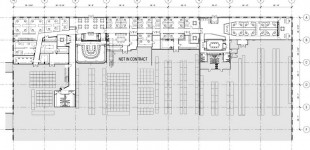
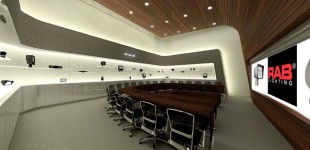
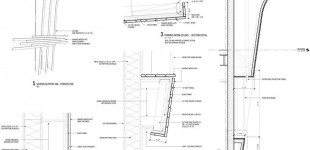
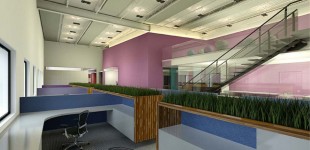 ]]>
]]>TORTOSA, SPAIN
ESTUDIO CARME PINÓS
2006
This 140,000 sf building for the government of Catalunya is located in a dense historic center. The jagged form creates three small plazas and serves as a great sculpture in the midst of the city. The program includes a subterranean parking garage, customer service area, café, auditorium, and offices.
Physical models were used to redesign the main stairway and study the front and rear entry facades before completing the construction drawing set. All drawings and documents were in Catalan.
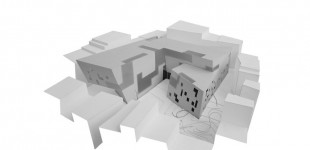

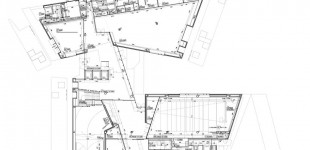

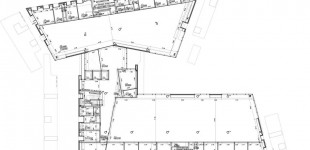
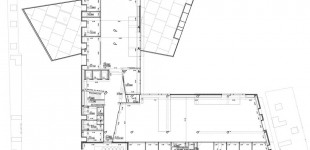
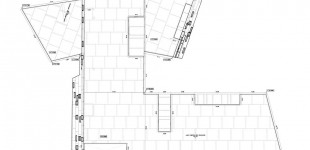


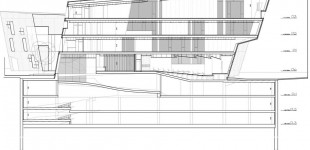


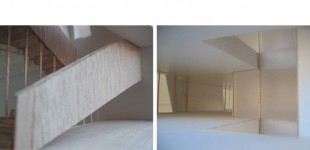

 ]]>
]]>BRONX, NEW YORK
COMPETITION
2009
WITH: LEAH DAVIS, NANCY NOWACEK
This proposal for the transformation of the Grand Concourse in the Bronx was selected for exhibition at the New York Center for Architecture in 2009.
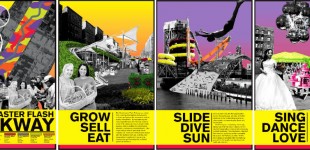


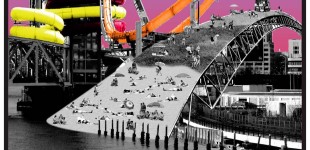
 ]]>
]]>GRADUATE STUDIO
2005
WITH: JULIA ELLINWOOD
Located in the Urban Reserve, a residential development eight miles from downtown Dallas that promotes sustainability, urbanity, and contemporary architecture, this house mediates the clear disjunction between suburban and urban life. The design addresses general concerns of density, community, privacy, adjacency, typology, and transportation within the specific constraints of the site. A complete set of working drawings was produced for this project.
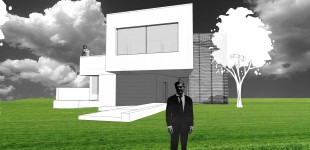
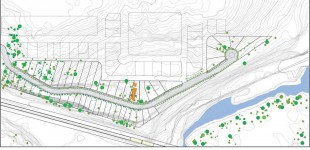
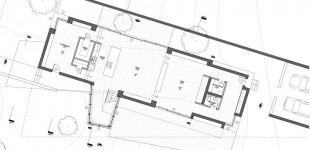
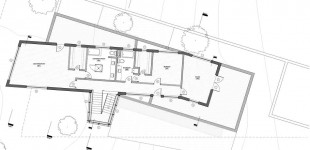

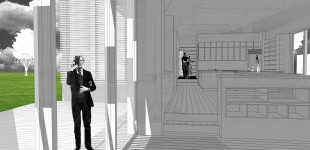
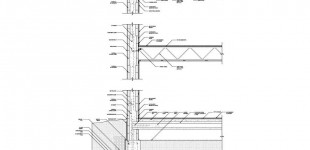

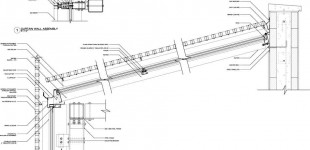


 ]]>
]]>ATLANTIC CITY, NEW JERSEY
COMPETITION
2010
WITH: PETER DORSEY, ANDREA SCHELLY
The cloud-like canopy is comprised of dark copper triangles, representing the dead, punctuated by colored glass triangles, representing survivors. The canopy, which will corrode and patina in the sea air, envelopes a shifting ground plane with spaces for informal congregation, reflection, and remembrance sheltered from the chaos of the boardwalk.
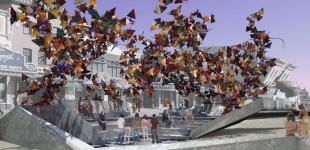
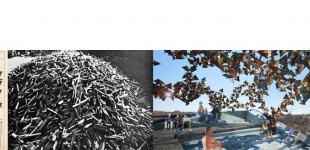
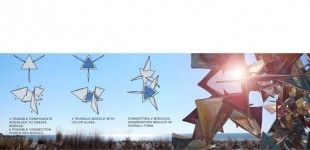
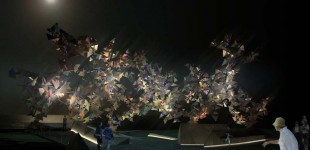
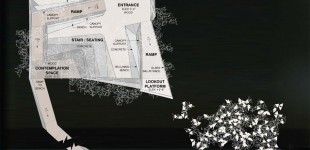 ]]>
]]>MEXICO CITY, MEXICO
GRADUATE STUDIO
2006
WITH: AJ SMITH
Located on the site of a decommissioned Pemex oil refinery in Mexico City, this project rehabilitates a post-industrial landscape, treating architecture and landscape architecture as inseparable.
The design of Refinery Park maintains the industrial character of the site and celebrates the artificial, constructed nature of the landscape. Large areas of the highly-contaminated site are capped with water to enable public use and reduce remediation costs. A filtration system of settling tanks, ‘chinampa’ bio-filtration planters, and constructed wetlands provides water for the capping ponds by treating graywater from the surrounding district. Commercial development around the park’s edges supports the park and attracts visitors. The Museum of Energy is the park’s primary cultural destination. The design draws on the formal language and scale of the landscape masterplan and the refinery’s industrial installations. The building incorporates the refinery’s decommissioned power plant and defines an active public plaza at the heart of the park.
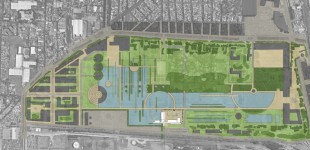
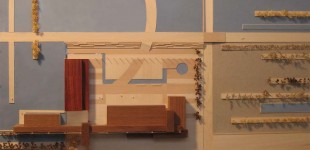
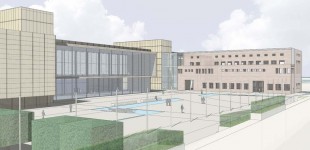
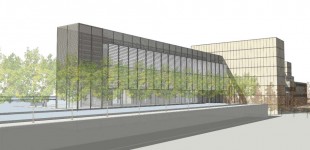

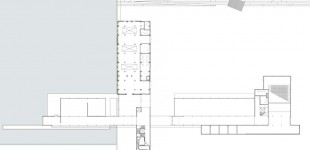


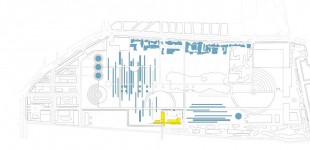
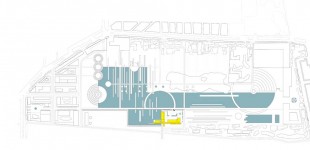

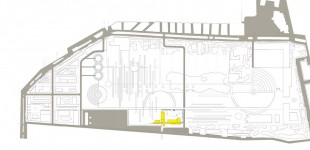

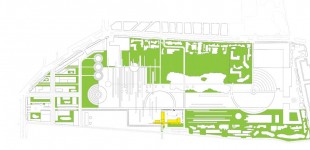

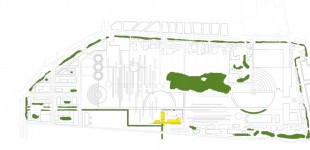
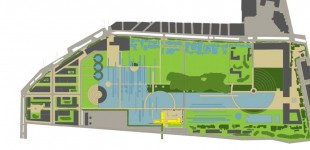 ]]>
]]>ESTUDIO CARME PINÓS
2006
Designed for Escofet, a Barcelona-based company specializing in architectural tile and street furniture, this cast concrete bench is based on a single form that can be used in various orientations and configurations to create a versatile, modular, and expressive seating system. The name ‘ISI’ was chosen to recall the form of the bench itself.
Working one-on-one with Carme Pinós, I developed the design through drawings, digital models, and full-scale physical mock-ups resulting in a set of concrete prototypes for our review.

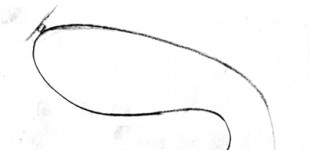
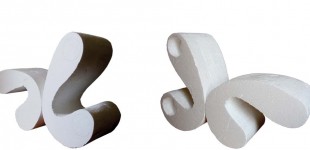
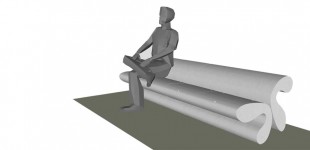
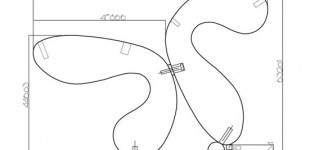
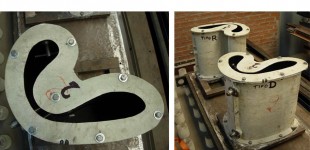

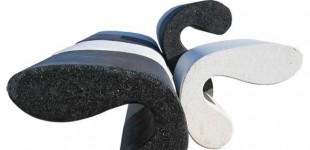
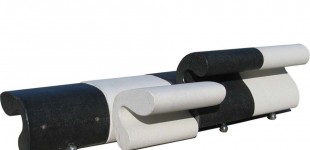 ]]>
]]>